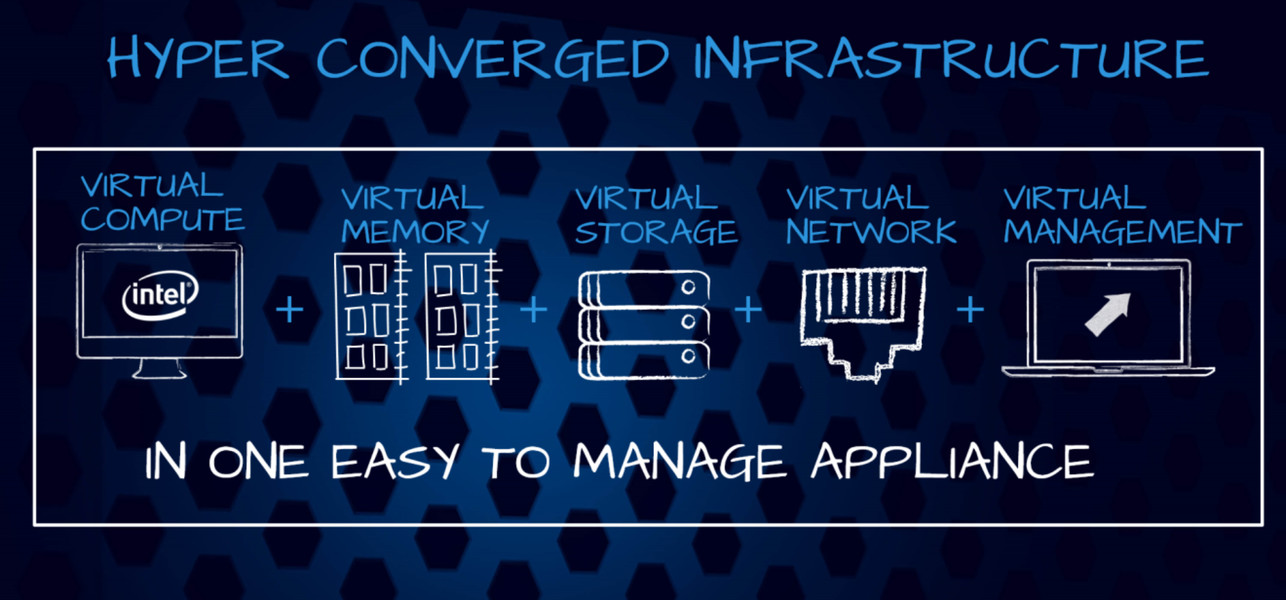
iSAP in partner with Nutanix delivers Nutanix Solutions to scale IT to be more focused on business applications and services that empower business.
Nutanix Platform leverages state of the art Intel x86-based servers and hyper-convergence to natively integrate compute, storage and virtualization in scale-out clusters. This solution replaces the silos of servers and storage along with the need for separate management tools and processes.
Nutanix platform offers the capability to run almost any workload. It has ability to run both ORADB and other VM workloads simultaneously on the same platform. Density for Oracle Database deployments will be primarily driven by the database's CPU and storage requirements. It is proved that it preferred to increase the number of ORADB VMs on the Nutanix platform, as compared to scaling the number of Oracle instances, to fully take advantage of its performance and capabilities.
The Nutanix Virtual Computing Platform is a scale-out cluster of high-performance nodes, or servers, each running a standard hypervisor and containing processors, memory and local storage (consisting of SSD Flash and high capacity SATA disk drives). Each node runs virtual machines just like a standard virtual machine host.

Local storage from all nodes is virtualized into a unified pool by the Nutanix Distributed File System (NDFS). In effect, NDFS acts like an advanced NAS that uses local SSDs and disks from all nodes to store virtual machine data. Virtual machines running on the cluster read and write data to NDFS as if they were connected to traditional shared storage.

NDFS file system is VM aware and provides advanced data management features. It brings data closer to virtual machines by storing the data locally on the system, resulting in higher performance at a lower cost. Nutanix Virtual Computing Platform can horizontally scale from as few as three nodes to a large number of nodes, enabling organizations to scale their infrastructure as their needs grow.
The Nutanix Elastic Deduplication Engine is a software-driven, massively scalable and intelligent data reduction technology. It increases the effective capacity in the disk tier with MapReduce Dedupe, as well as the RAM and flash cache tiers of the system, by eliminating duplicate data. This substantially increases storage efficiency, while also improving performance due to larger effective cache capacity in RAM and flash. Deduplication is performed by each node individually in the cluster allowing for efficient and uniform deduplication at scale. This technology is increasingly effective with full/persistent clones, P2V migrations, or large numbers of similar dev and test Oracle databases.

NDFS delivers a unified pool of storage from all nodes across the cluster, leveraging techniques including striping, replication, auto-tiering, error detection, failover and automatic recovery. This pool can then be presented as shared storage resources to VMs for seamless support of features like vMotion, HA, and DRS, along with industry-leading data management features. Additional nodes can be added in a plug and- play manner in this high-performance scale-out architecture to build a cluster that will easily grow as your needs do.
The Nutanix platform operates and scales Oracle Database (ORADB) in conjunction with the other hosted services providing a single scalable platform for all deployments. For existing sources and platforms, interaction with the ORADB platform on Nutanix will occur over the network. The figure below shows a high-level view of the ORADB on Nutanix solution:

The Nutanix approach of modular scale-out enables customers to select any initial deployment size and grow in more granular data and compute increments. This removes the hurdle of a large up-front infrastructure purchase that a customer will need many months or years to grow into, ensuring a faster time-to-value for the implementation.
Data Tiering and ManagementNutanix Distributed Filesystem (NDFS) has a built-in Information Lifecycle Management (ILM) process which will automatically handle data placement. Applying this to the data lifecycle in ORADB, all hot data is automatically written to the high performance SSD tier. Both hot and warm data sit in this tier to be readily accessed and provide the highest performance. An in-memory read cache is leveraged to cache frequently accessed data from all tiers. However, given the sequential nature of some ORADB files, Nutanix ILM can be configured to automatically bypass the SSD tier for sequential workloads, which allows the SSD's to be used primarily for random IO and provides increased SSD endurance.
Nutanix platform operates and scales Microsoft SQL Server in conjunction with the other hosted services, providing a single scalable platform for all deployments High level view of Microsoft SQL on Nutanix.

Nutanix web-scale approach enables customers to select any initial deployment size and grow in more granular data and compute increments. This removes the hurdle of a large up-front infrastructure investment which will take months or years for a customer to grow into and ensure a faster time to value for the implementation.
SQL is one of many workloads that can be run simultaneously on Nutanix hyper-converged infrastructure. The web-scale Nutanix platform brings in many advantages
» Modular incremental scale
» High Performance
» Integration
» Data Efficiency
» Effective intelligent tiering
» Business Continuity and data protection
» Enterprise grade system management